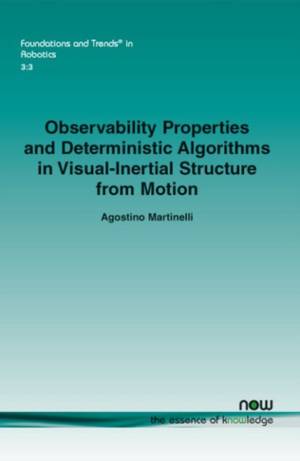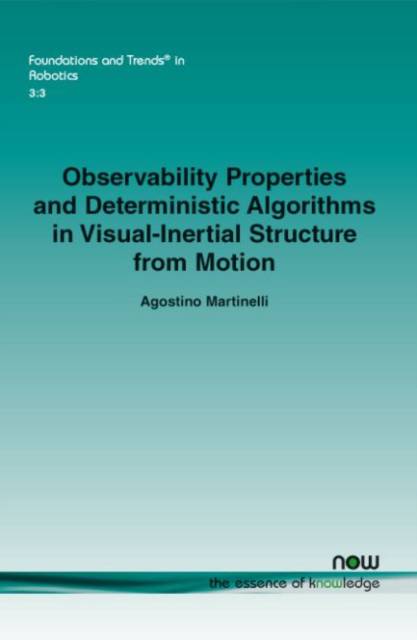
- Afhalen na 1 uur in een winkel met voorraad
- Gratis thuislevering in België vanaf € 30
- Ruim aanbod met 7 miljoen producten
- Afhalen na 1 uur in een winkel met voorraad
- Gratis thuislevering in België vanaf € 30
- Ruim aanbod met 7 miljoen producten
Zoeken
Observability Properties and Deterministic Algorithms in Visual-Inertial Structure from Motion
Agostino Martinelli
€ 55,95
+ 111 punten
Omschrijving
The term Structure from Motion (SfM) was coined by the computer vision community to define the problem of estimating the three-dimensional structure of the scene and the motion from two-dimensional image sequences. This monograph considers the same estimation problem but where the sensor suit is also composed of inertial sensors (accelerometers and gyroscopes). This problem is referred to as the Visual-Inertial Structure from Motion (VI-SfM). The VI-SfM problem has generated particular interest and has been investigated by both computer science and neuroscience. These sensors require no external infrastructure which is a key advantage for robots operating in unknown environments where GPS signals are shadowed. For this reason, vision and inertial sensing have received great attention from within the mobile robotics community in recent years and many approaches have been introduced. Observability Properties and Deterministic Algorithms in Visual-Inertial Structure from Motion provides the reader with the state of the art in VI-SfM and also adds a series of new results. In particular, these new results significantly improve the current state of the art by providing new properties related to three fundamental issues: observability properties, resolvability in closed-form and data association. These results are important from a technological point of view. Additionally, they can provide a new insight for the comprehension of the process of vestibular and visual integration, which has been investigated in the framework of neuroscience.
Specificaties
Betrokkenen
- Auteur(s):
- Uitgeverij:
Inhoud
- Aantal bladzijden:
- 86
- Taal:
- Engels
- Reeks:
- Reeksnummer:
- nr. 8
Eigenschappen
- Productcode (EAN):
- 9781601987389
- Verschijningsdatum:
- 30/12/2013
- Uitvoering:
- Paperback
- Formaat:
- Trade paperback (VS)
- Afmetingen:
- 156 mm x 234 mm
- Gewicht:
- 131 g

Alleen bij Standaard Boekhandel
+ 111 punten op je klantenkaart van Standaard Boekhandel
Beoordelingen
We publiceren alleen reviews die voldoen aan de voorwaarden voor reviews. Bekijk onze voorwaarden voor reviews.











